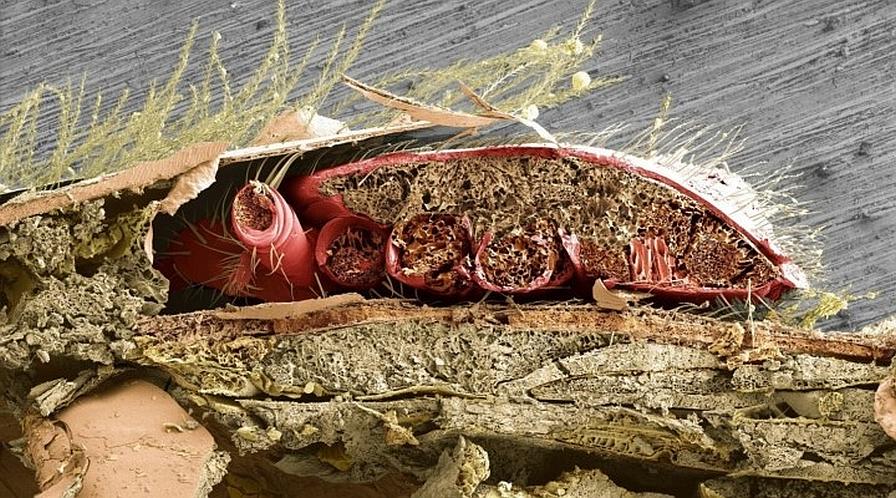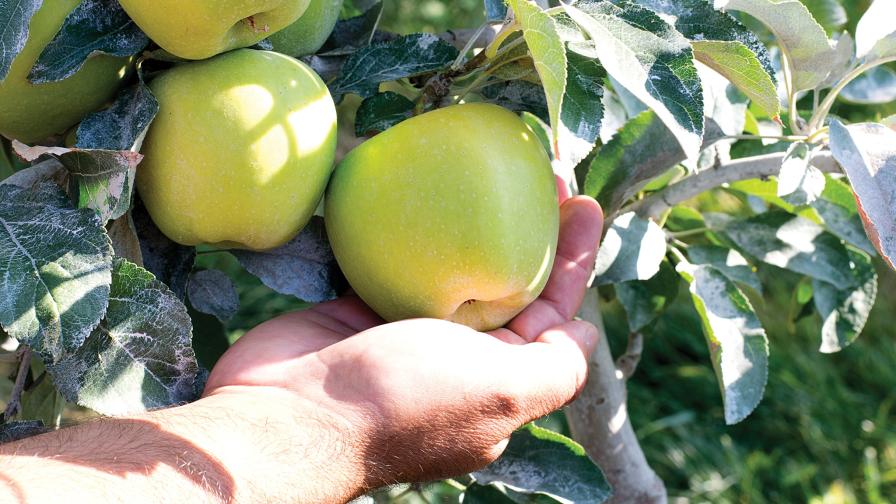New Research Unlocks Feeding Habits of Honey Bee Villain

A cross-section of a varroa mite feeding on a honey bee’s abdominal cavity is one of several ARS microscopy images changing what we know about how mites damage honey bees. (Photo: USDA)
New research by scientists at the USDA Agricultural Research Service (ARS) and the University of Maryland sheds new light regarding a honey bee pest (Varroa destructor) that is considered the greatest single driver of global honey bee colony losses. Managed honey bee colonies add at least $15 billion to the value of U.S. agriculture each year.
The microscopy images are part of a major study showing that the Varroa mite feeds on the honey bee’s fat body tissue (an organ similar to the human liver) rather than on its “blood,” (or hemolymph). This discovery holds broad implications for controlling the pest in honey bee colonies.
The study was published online and in the print edition of the Proceedings of the National Academy of Sciences.
Through the use of electron microscopy, the researchers were able to locate feeding wounds on the bee caused by the mites, which were located directly above the bee’s fat body tissue. The images represent the first direct evidence that Varroa mites feed on adult bees, not just the larvae and pupae.
In addition, University of Maryland researchers conducted feeding studies and found that Varroa mites that were fed a diet of fat body tissue survived significantly longer and produced more eggs than mites fed hemolymph. The results show,mites fed a hemolymph-only diet were comparable to those that were starved. Thus, proving conclusively that the Varroa mite feeds primarily on the fat body consumed from bees.
The results are expected to help scientists develop more effective treatments to help bees cope with a mite known to spread at least five viruses. They also help explain why Varroa mites have such detrimental effects on honey bees, weakening their immune systems, and making it harder for them to store protein from pollen and survive through the winter.










